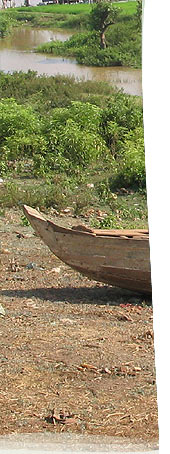

Community Forestry International Projects
Fri, Oct 19 2007
Community Forest Management in Northeast India: Phase II
COMMUNITY-BASED CONSERVATION IN NORTHEAST INDIA



Partner Organizations in India:
- Regional Centre, National Afforestation and Eco Development Board, North-Eastern Hill University
- Manipur and Meghalaya Forest Departments
- NE India Regional Working Group
- BOSCO Reach Out
- WSDS-Weaker Sections Development Society
Manipur
Manipur is located between the southern portion of Assam and Burma. They have a population of almost 2.5 million with a total land area of 8,621 sq. miles (22,327 sq. km.). There are 33 Scheduled Tribes (granted legitimacy under Indian Law) with the two major groups being the Nagas and the Kuki. CFI selected two project sites in Manipur for its CF work: Makhan Village (Naga) and N. Songlun village (Kuki).
Prior to establishing the goals of the project in these two areas, participatory meetings were held by the CFI-NE team: S. Palit, S. Barik, and Ivan Roy. In Makhan, the CFI meeting was attended by the village headman and members of the village, including women. In N. Songlun, the meeting was attended not only by the headman but almost the entire village as well!
It was determined that CFI would collaborate with the Forest Department to assist the villagers to strengthen their institutional framework within the villages that would be capable of making comprehensive natural resource management plans, apply to development schemes for financial and technical assistance, and implement the plan. The broad goals in Manipur are: 1) Sustainably manage the natural resources ncluding: sacred groves, clan, private, and government forests, water , and jhum lands. 2) A landscape approach will be utilized to manage the broad area rather than small, site specific approaches. 3) In order to insure effective participation of the villagers in the planning project, survey and demarcation, 3-D modeling, Participatory Rural Appraisal (PRA) exercises will be used.
In January 2005, CFI signed a Memorandum of Understanding with the Manipur Forest Department to assist with the project. The Forest Department are enthusiastic about community forestry in Manipur and have pledged support through their forest development agencies to at least partially fund a joint venture with the villagers.
A local NGO, the Weaker Sections Development Society (WSDS) is collaborating with the project to assist with community-based landscape management planning and needs identification. Together with the Forest Department and WSDS, CFI hosted a multi-stakeholder meeting to ascertain what areas of interest, an assessment of impact, and the
potential strategies for obtaining support for reducing obstacles. In addition, an exercise was conducted to analyze the market potential of the main agri-products of both villages. Other activities that have been undertaken have been: PRA activities, manual GIS training and mapping, documentation of manual GIS exercise, Community analysis of PRA and manual GIS data, digitization of 1:50,000 topographic sheets.
The villagers in both sites are enthusiastically participating in the project and the participatory approach along with the multi-stakeholder involvement is proving to be a great success.
Meghalaya
Meghalaya is located between Assam to the north and east, Bangladesh to the south, and W. Bengal to the west. Its capital is Shillong, a former British hill station during colonial times. The CFI-NE office is located in Shillong, which is also home to the Northeast Hill University.
Meghalaya was carved out of Assam as an autonomous state on April 2, 1970. It was declared a state of the Indian Union in 1972. The state of Meghalaya is comprised of the Khasis, Garo and Jaintia hills with thick forests and scenic beauty. 80% of the state is tribal. CFI is working in two project sites in Meghalaya: Mawphlang Lyngdohship and Umden. The Lyngdohship also manages the Mawphlang sacred grove which
encompasses 60% of the total land area with areas of good forest cover. Prior to the CFI project, the Lyngdohship was concerned that the communities were not educated enough about the importance of the valuable resources within their forests. But, after a series of meetings and approval of a formal network in November 2004, rules governing the management of the sacred grove have been developed. CEE, a local NGO, have been collaborating with the Lyngdohship to provide environmental education to students and young children. In addition to the management plan, the Lyngdohship is also planning to develop eco-tourism in the grove with a special trail that links the forest to a local village.
The second CFI project area is in Umden. This project is being managed by Dolan Malai, a former schoolteacher and avid environmentalist. After conducting a village-wide survey, he determined that 20 of the 32 villages he visited were interested in establishing community forestry. Umden also has a tradition of sacred groves and within this project area, three of the forests are designated as sacred.
But, without proper education and the establishment of rules and regulations, the sacred groves are slowly being plundered for their natural resources. With CFI support, the communities are starting to develop plans to protect their forests and revitalize their traditions of sacred groves. The rich historical and ancestral sites of Umden are starting to be valued once more as the villagers receive assistance for their efforts.
CF Working Group for the Northeast In Phase II, the Community Forestry Working Group for Northeast India has been divided to focus on the two CFI project areas in Manipur and Meghalaya. Stakeholder workshops have been held in each state bringing together community leaders, NGOs, Forest Department staff, and senior government planners to discuss community environmental and development needs.